
5 Oct, 2016
Letter from South Africa: Apartheid Museum Shows How Fearless People Power Ended White Supremacy
Johannesburg – The world celebrated World Tourism Day 2016 in Bangkok, my home city. As global tourism leaders congregated in the Thai capital, I left to spend World Tourism Day and indeed most of September 2016 in South Africa – Nelson Mandela country.
This, because I felt it important to respond to a higher calling. Travel & tourism, I believe, is a celebration of the best of humanity. It is less about jobs, economic growth, social media and all the other hackneyed clichés that dominate travel industry events these days. At a time when the world is almost entirely bereft of quality, principled leadership, I sought out a place where such leadership did exist, so that I could learn something from it.
South Africa has experienced the worst of humanity – slavery, colonialism and apartheid, and all the torturous excesses that kept these abhorrent systems in place, until time ran out and the tide turned. The country’s range of unmatched museums are grim reminders of these excesses. For history-buffs and museum-junkies like myself, they are motivating factors. They teach us that dedication, commitment and focus can always bring down a more powerful opponent trying to maintain an oppressive but ultimately doomed system.
The Apartheid Museum in Johannesburg should be a must-visit in this age of neo-colonialism when the West is seen as being the Best, and Might is considered Right. Indeed, satellite museums should be set up worldwide as a reminder both of the horrendous way people were treated as well as the the opposition campaign, now widely regarded as a role model for protests to end tyrannical dictatorships.
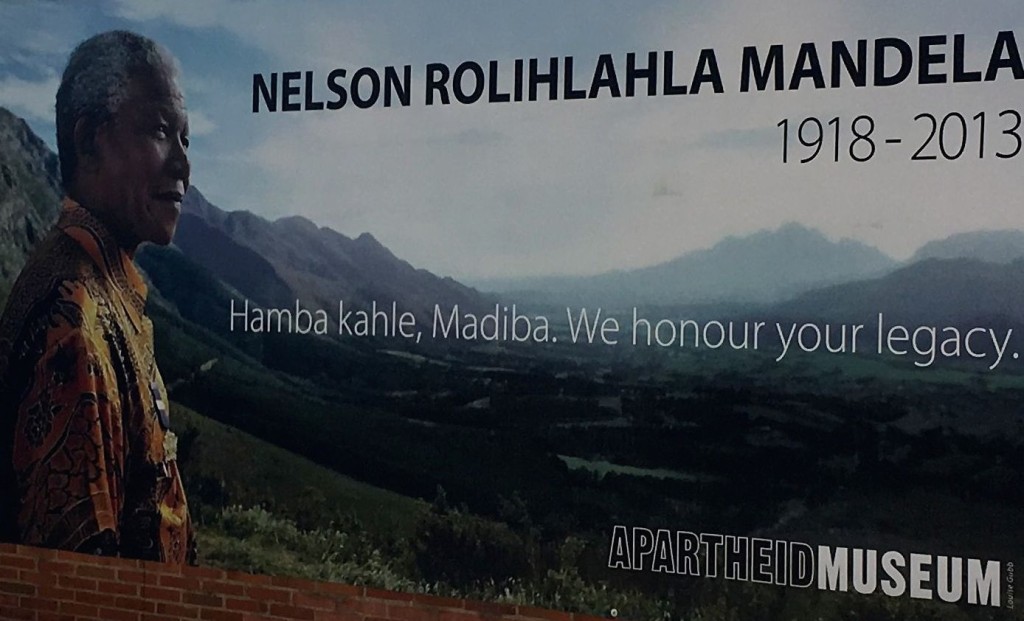
An immoral, repugnant system which segregated human beings by skin colour and ethnic background, apartheid was unsustainable but that did not stop its irrational white supremacist practitioners from believing themselves to be invincible.
A visit to the Apartheid Museum is a highlight of a visit to South Africa, just like a visit to the Holocaust Museum would be of a visit to Israel.
So what did I learn from my visit?
I learnt that the world has learnt nothing from the apartheid experience. Indeed, its lessons today are specifically applicable to Israel, a close ally and supporter of apartheid-era South Africa, and an ongoing practitioner of subjugation, separation and segregation, this time against the Palestinians, as well draconian dissent-stifling measures such as harassment, threats, assassinations, torture, racial profiling and imprisonment. The difference is that Israel is supported by a much more powerful global diaspora of financial, technological, geopolitical and economic backers.
I learnt that white supremacist hypocrisy is still alive and well. Europe, the United States, Australia and leading industrialised powers were at the forefront of the sanctions and embargoes that turned the screws on South Africa. Today, these same powers allow Israel to perpetuate an occupation that Haaretz newspaper commentators Gideon Levy and Oren Yiftachel have publicly branded apartheid (click here and here.)
I learnt that the leaders of Asia, Africa, Latin America and the Islamic world also learn nothing. Their penchant for demagoguery, cronyism, corruption and stupidity knows no bound. The cycle just keeps on turning.
One of the display panels (see picture below) in the museum cites a Nelson Mandela quote about the need for leaders to have a Moral Compass: Mandela says, “One of the temptations of a leader is that he may use his powerful position to settle scores with his detractors, marginalise them and in certain cases get rid of them and surround himself with yes-men and yes-women. A leader must keep the forces together, but you can’t do that unless you allow dissent. People should even be able to criticise the leader without fear or favour.”
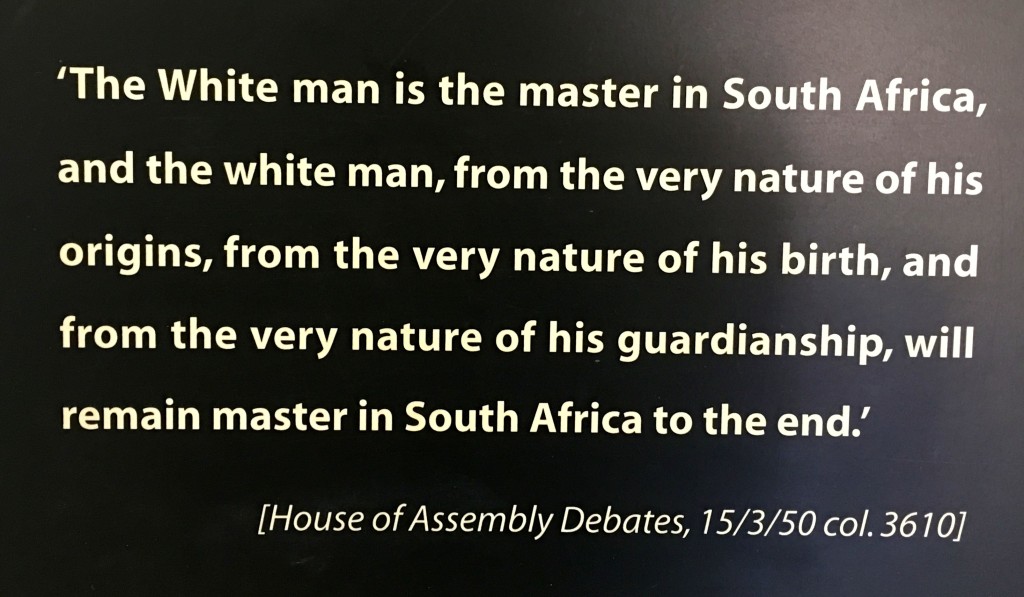
Exactly a century ago this year, World War I was raging, with two years still to go. Since then, the world has witnessed several more hot, cold and tepid wars, all of which have perpetuated human suffering, inequality and injustice.
How many times can you recall any speaker even mentioning that at a travel industry conference? As my own daughter herself said, sadly but realistically, “Nobody really cares.” The only game in town seems to be the Holocaust. That alone is symptomatic of an exclusive, supremacist mindset that must end.
The Apartheid Museum website contains a phenomenal amount of information for those pursuing a more fair, balanced and just world order. It may prove to be a game-changer, just as Nelson Mandela lived and died for.
See my pictures of just a few of the hundreds of display panels below.
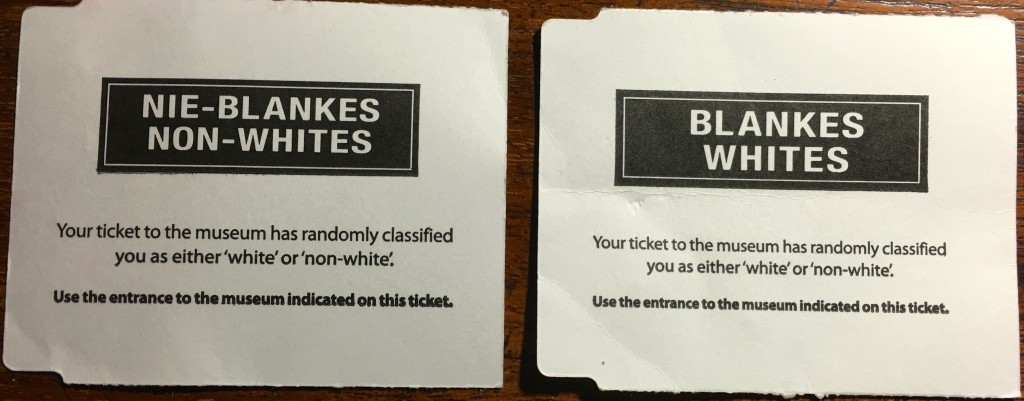 The museum tickets waste no time in giving visitors a good idea of what to expect. |
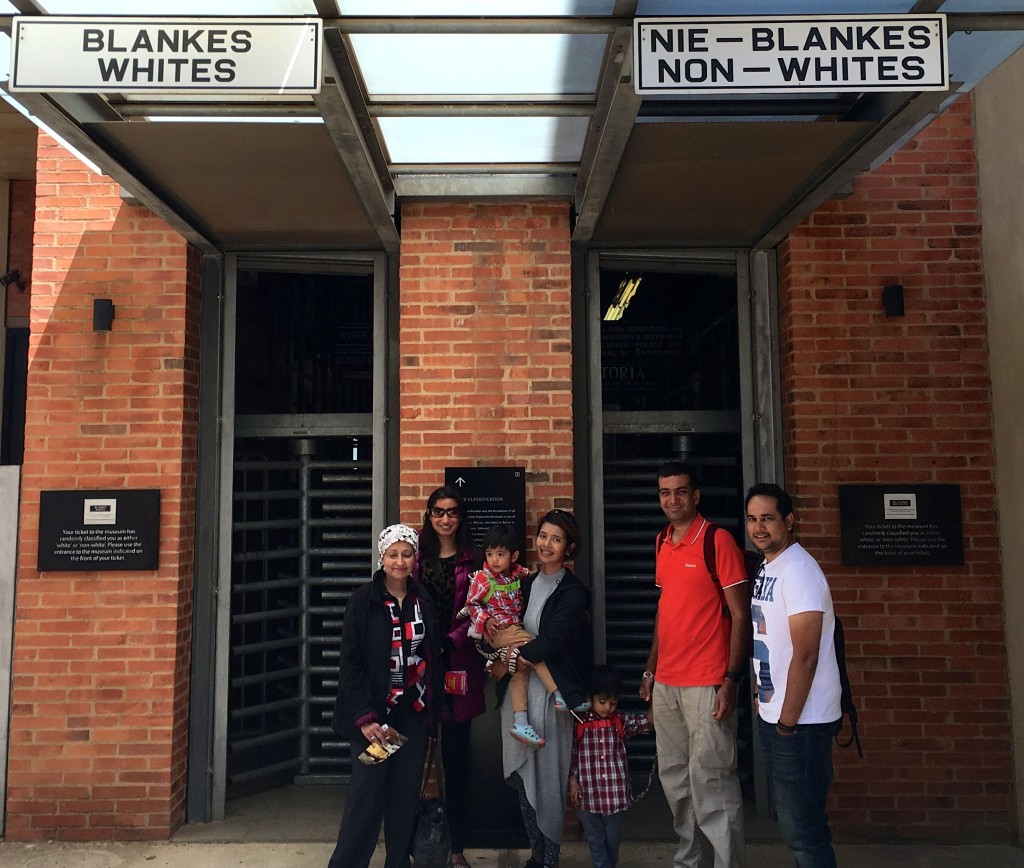 That’s my family.. Guess which door we went through. |
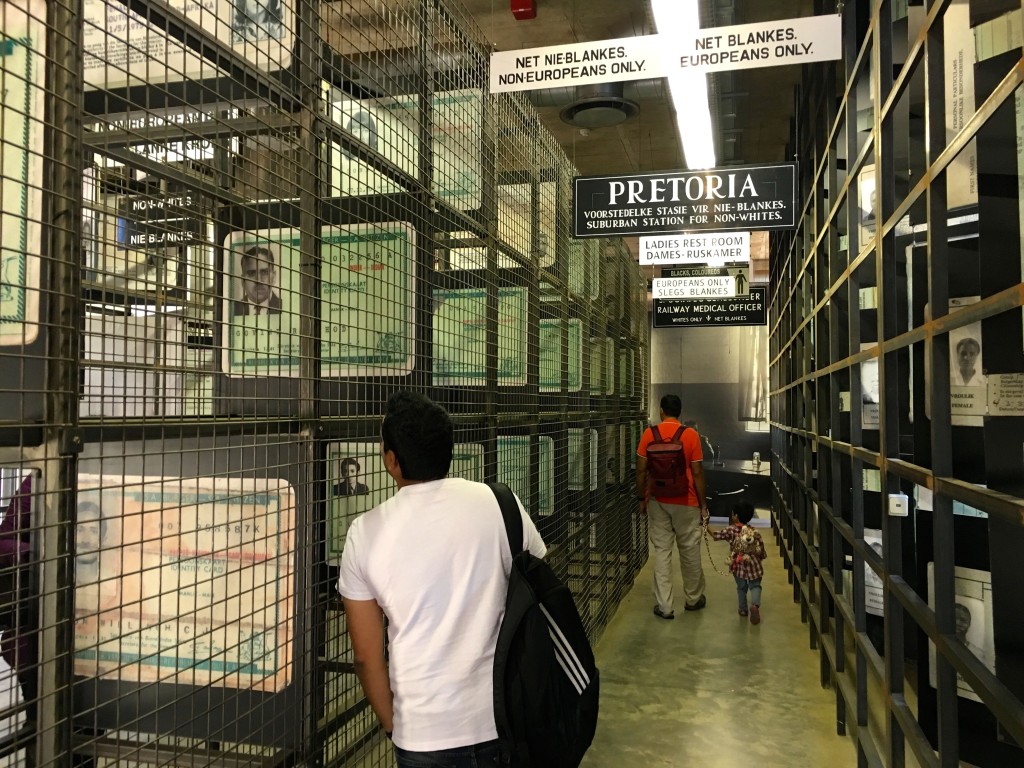 This is what the entrance to the train station looked like in the apartheid era. |
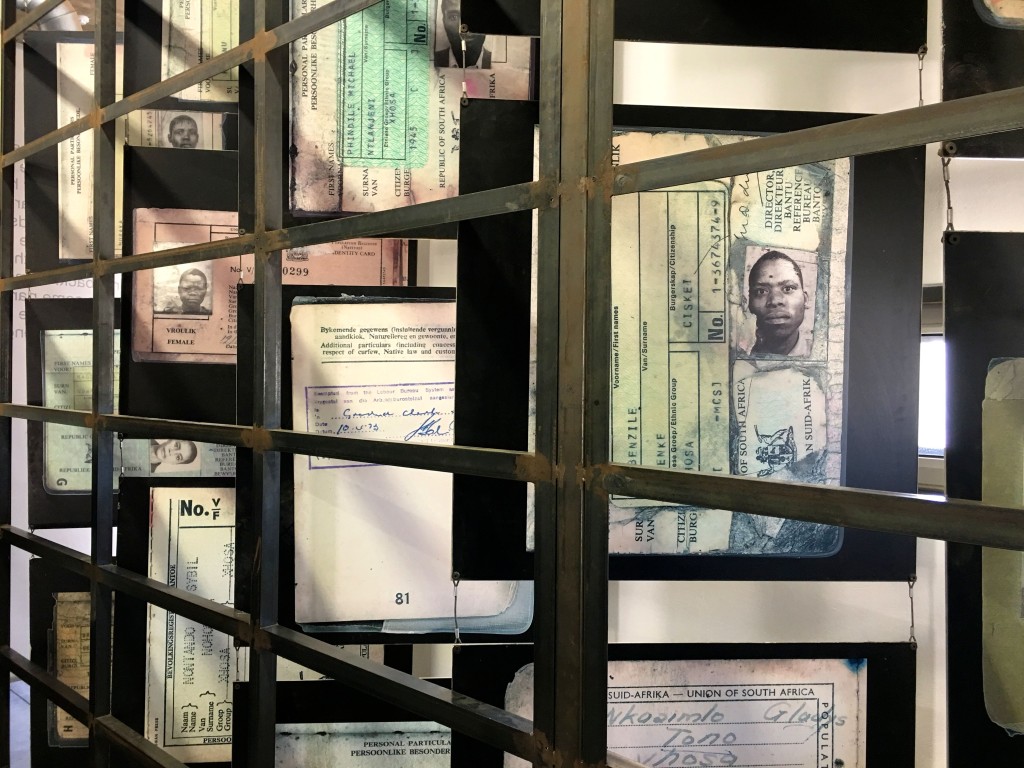 The ID cards were clearly based on race. |
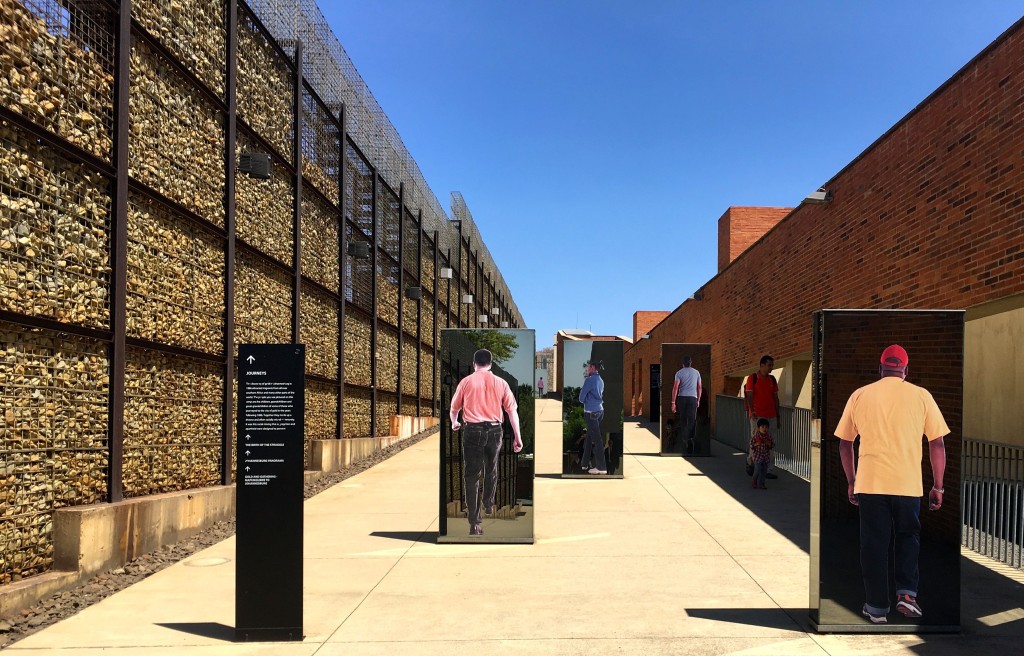 Segregation and separation even when walking into the mines. |
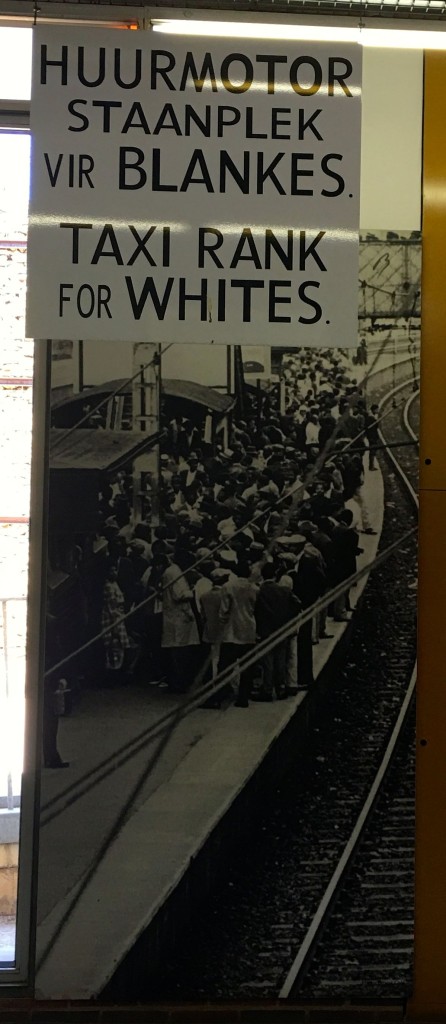 Segregation and separation at taxi ranks and railway stations. |
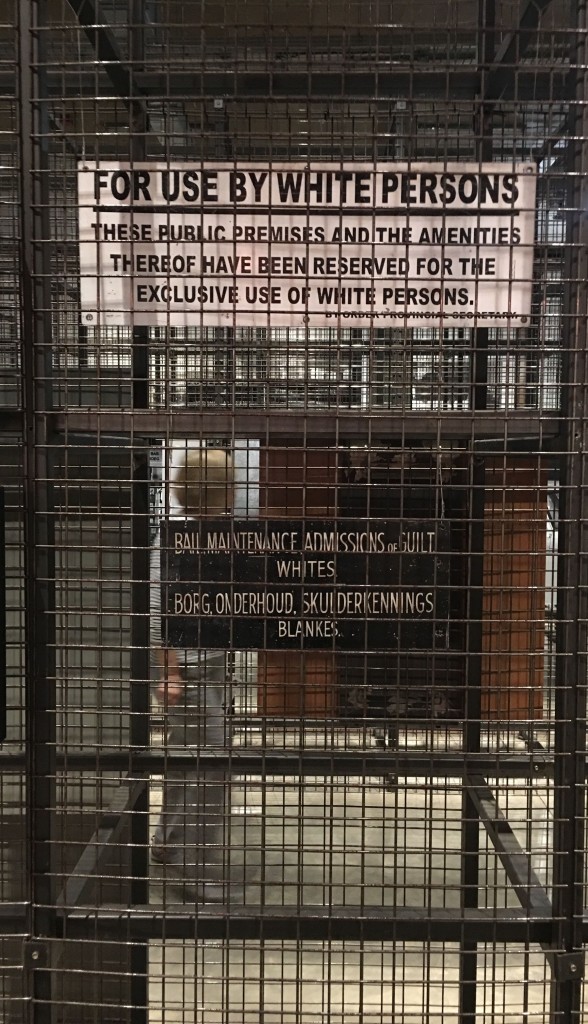 Segregation and separation at public facilities, including toilets. |
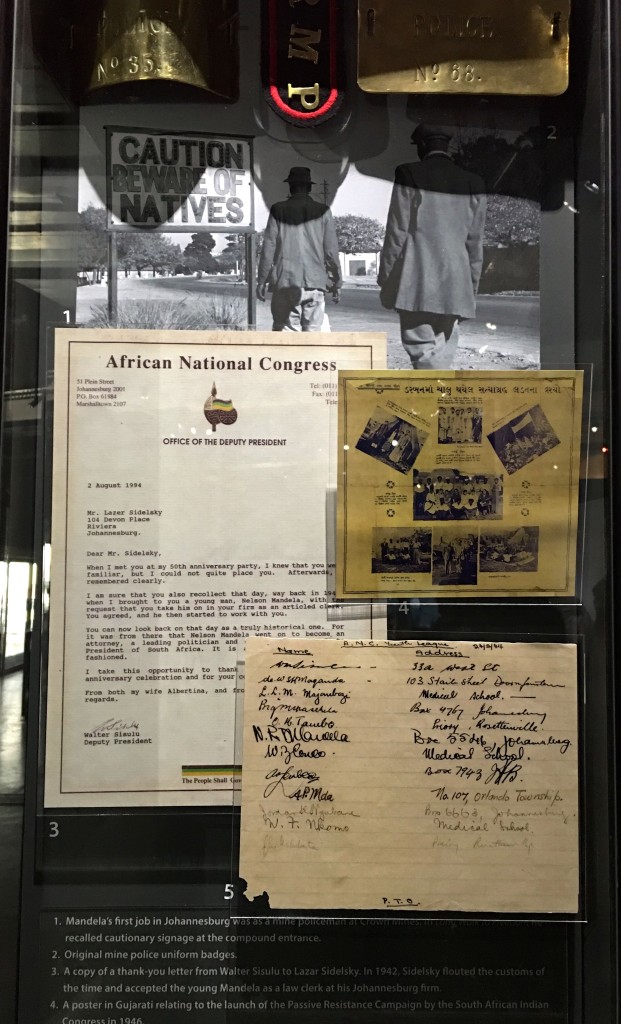 See the roadside sign: “Caution. Beware of Natives” |
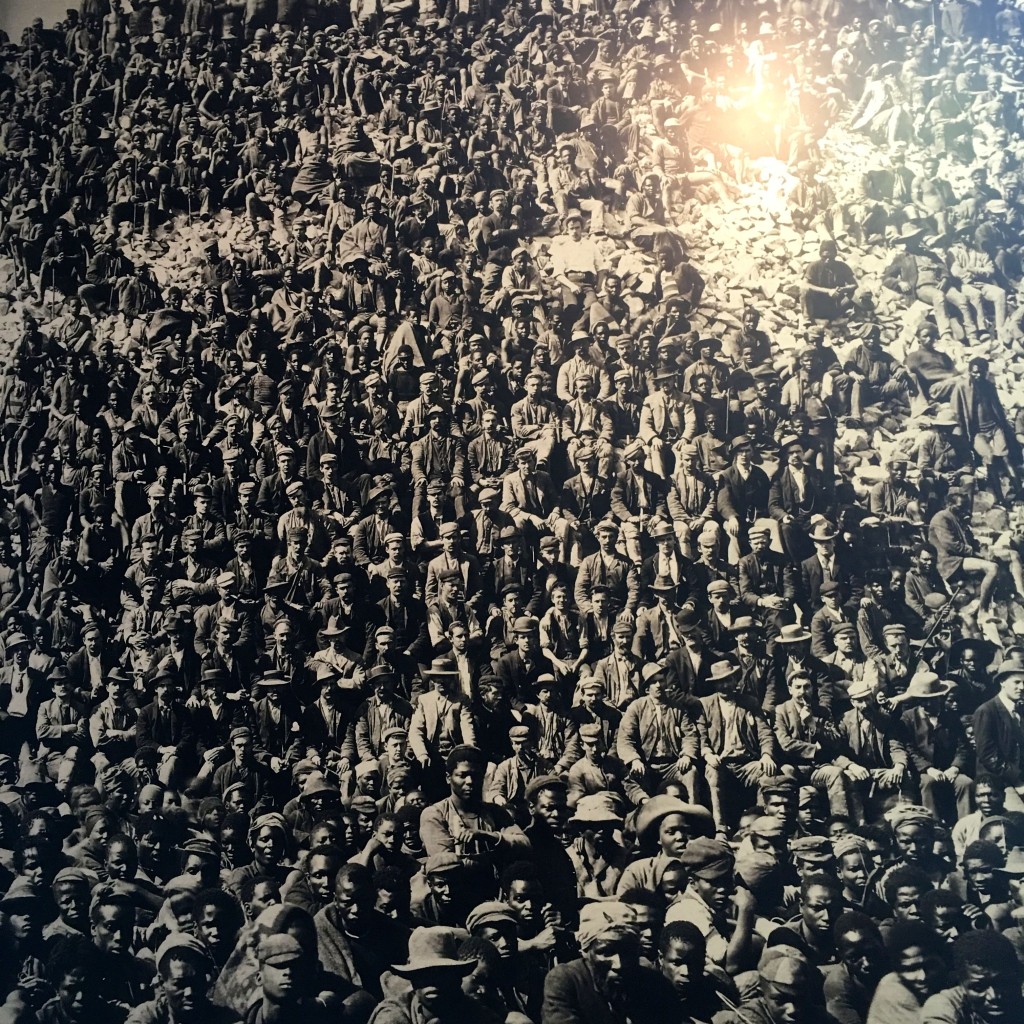 Black mine-workers. An example of the population the white supremacists thought they could subjugate indefinitely. |
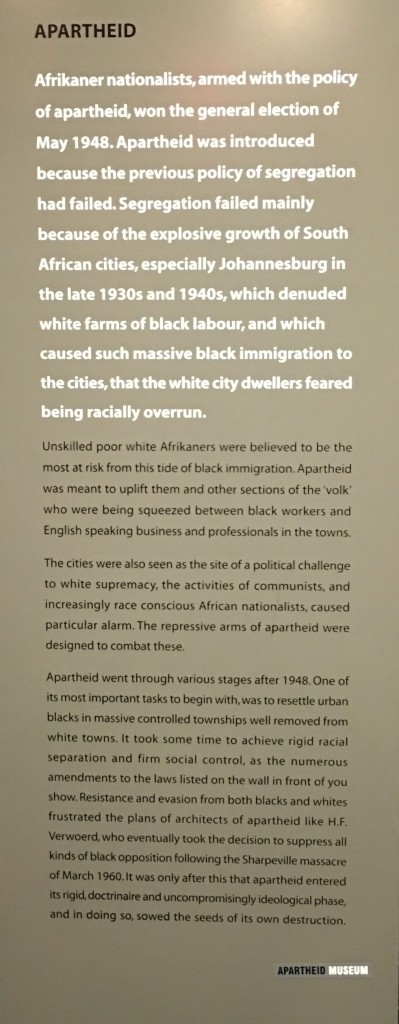 These panels describe what apartheid was all about. |
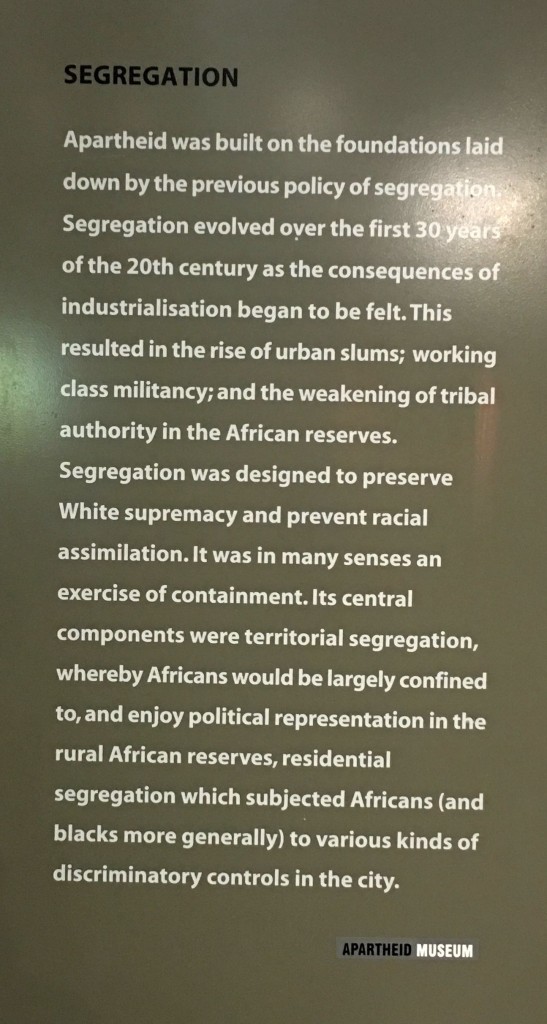 These panels describe what apartheid was all about. |
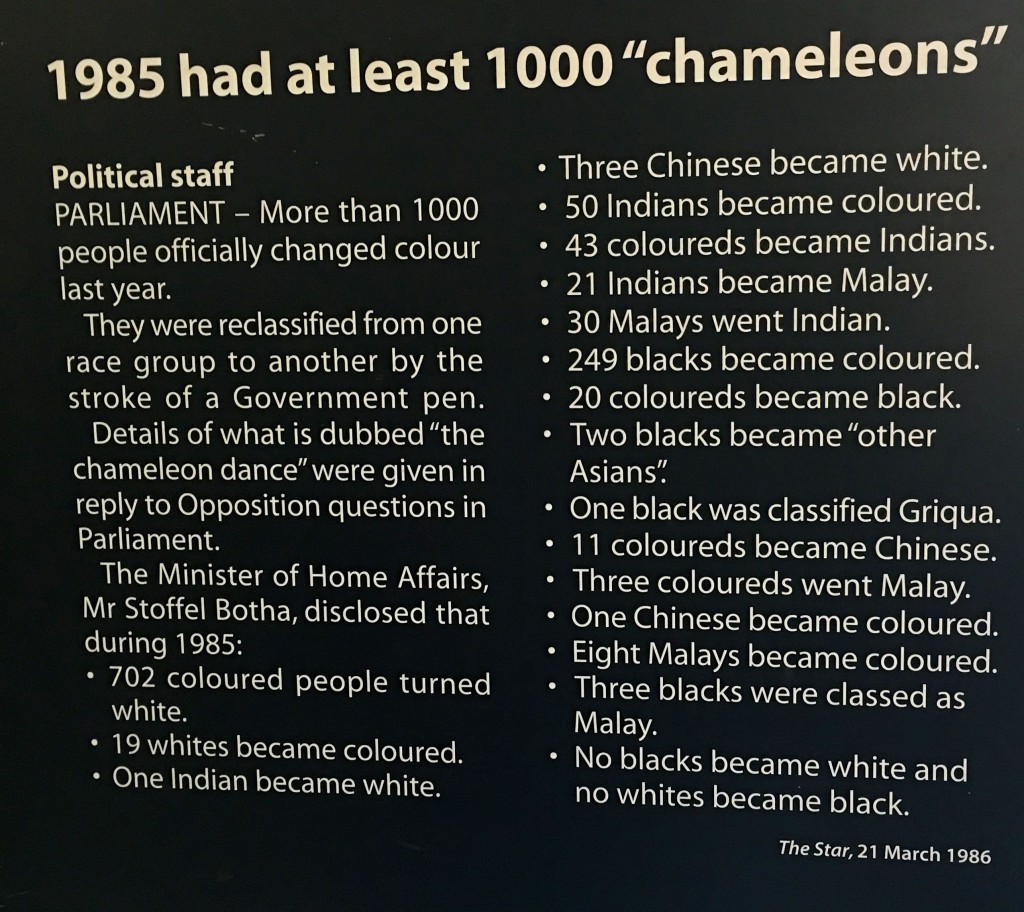 It was not all “Black” and “White” There were also Coloured people and “Chameleons”. |
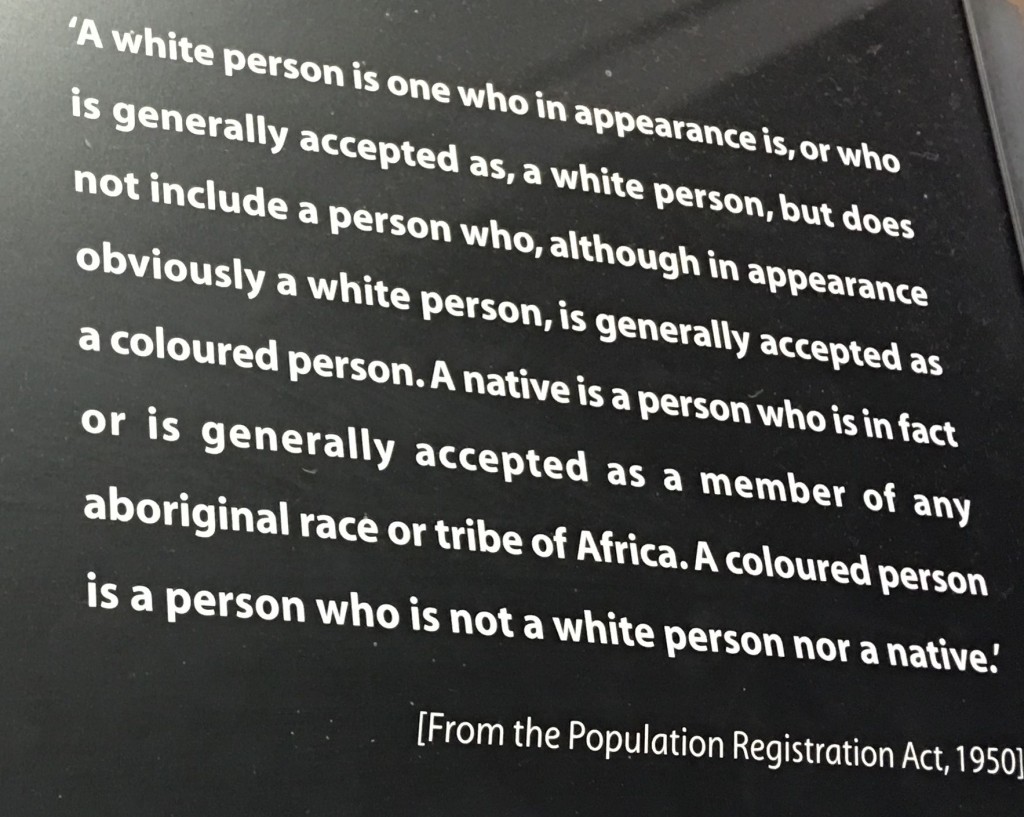 These panels describe what apartheid was all about. |
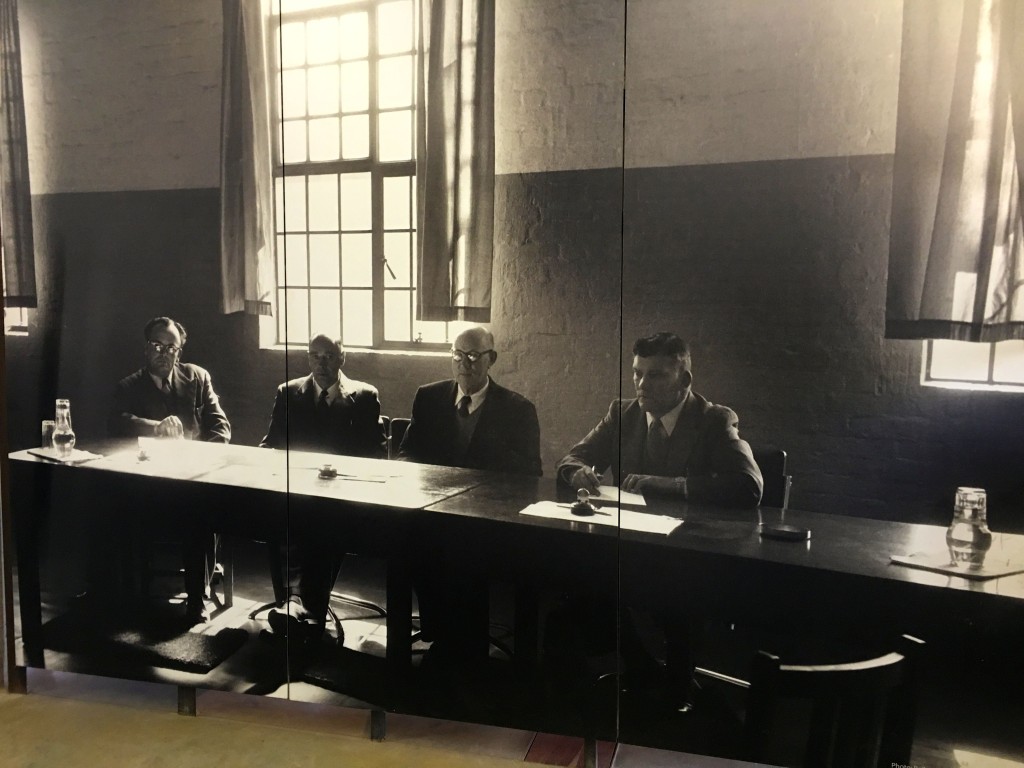 Blacks regularly faced these grim tribunals where the judgement was almost a foregone conclusion. |
The rise of Nelson Mandela |
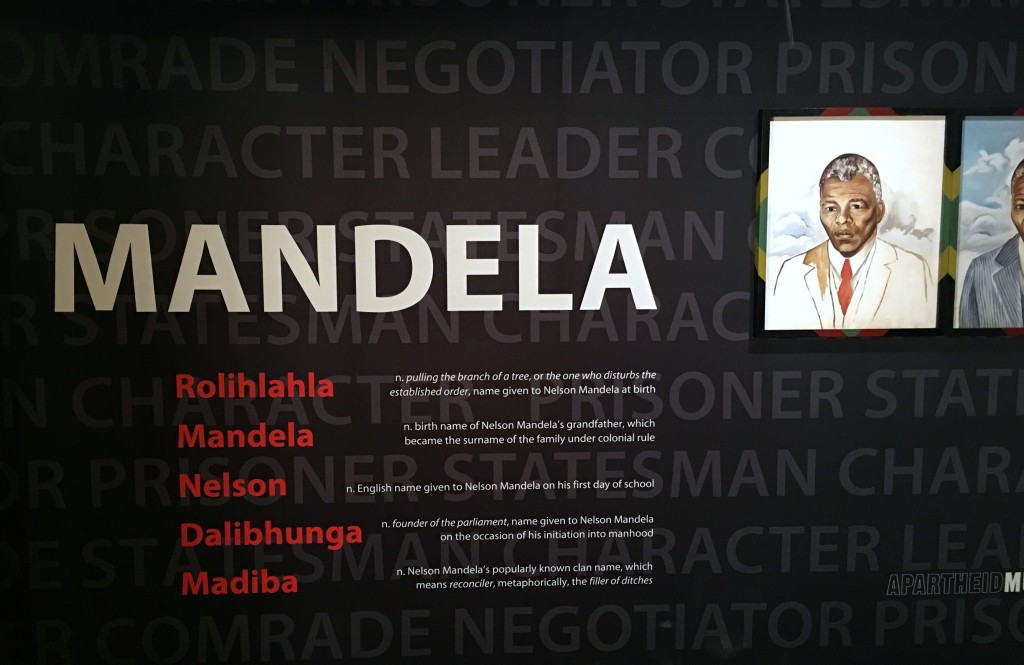 +++++++++++++ |
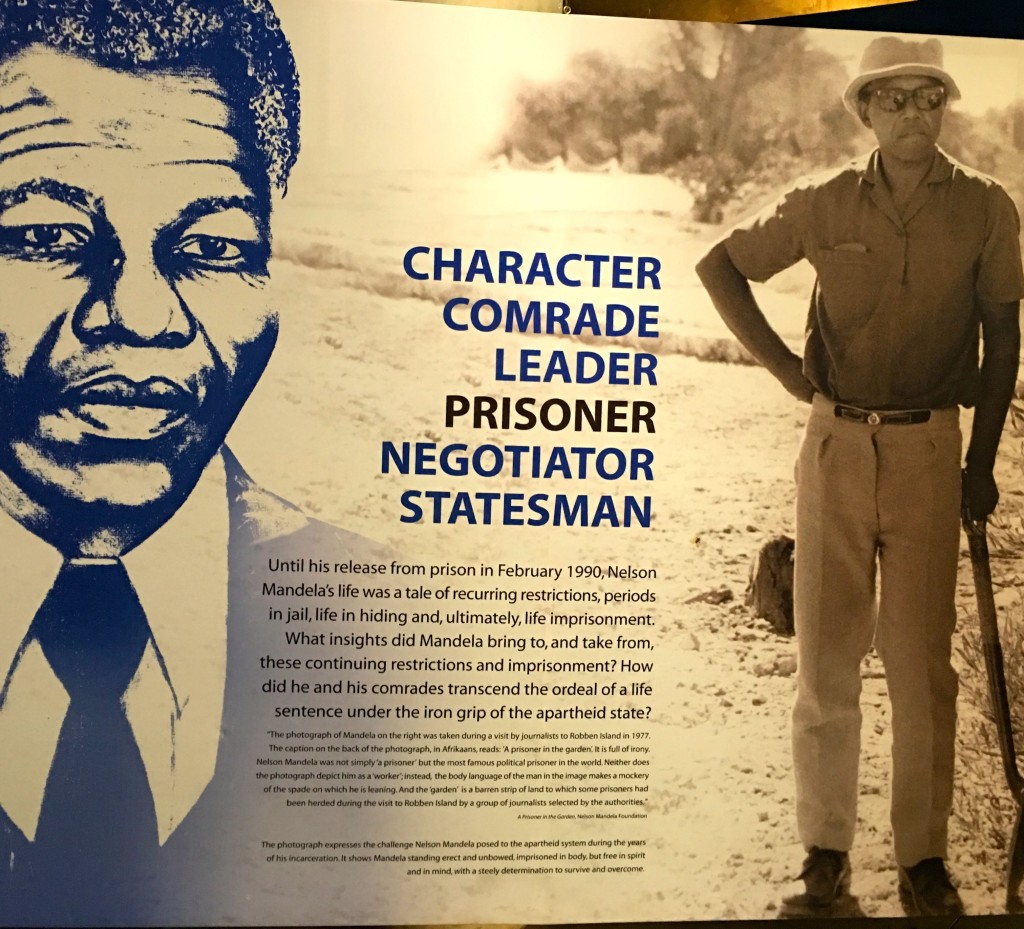 +++++++++++++ |
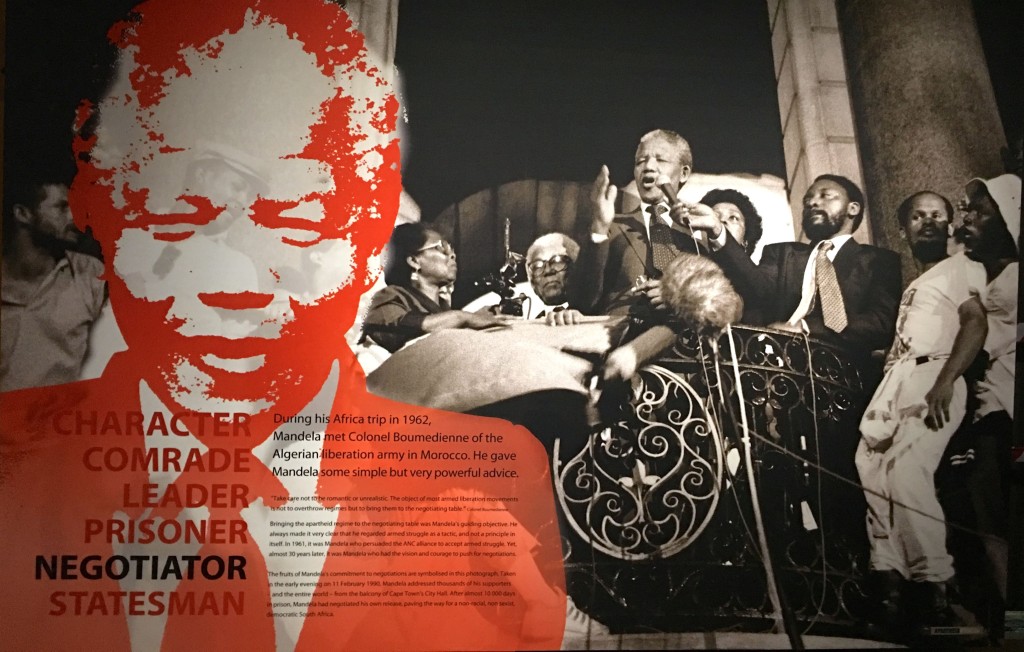 +++++++++++++ |
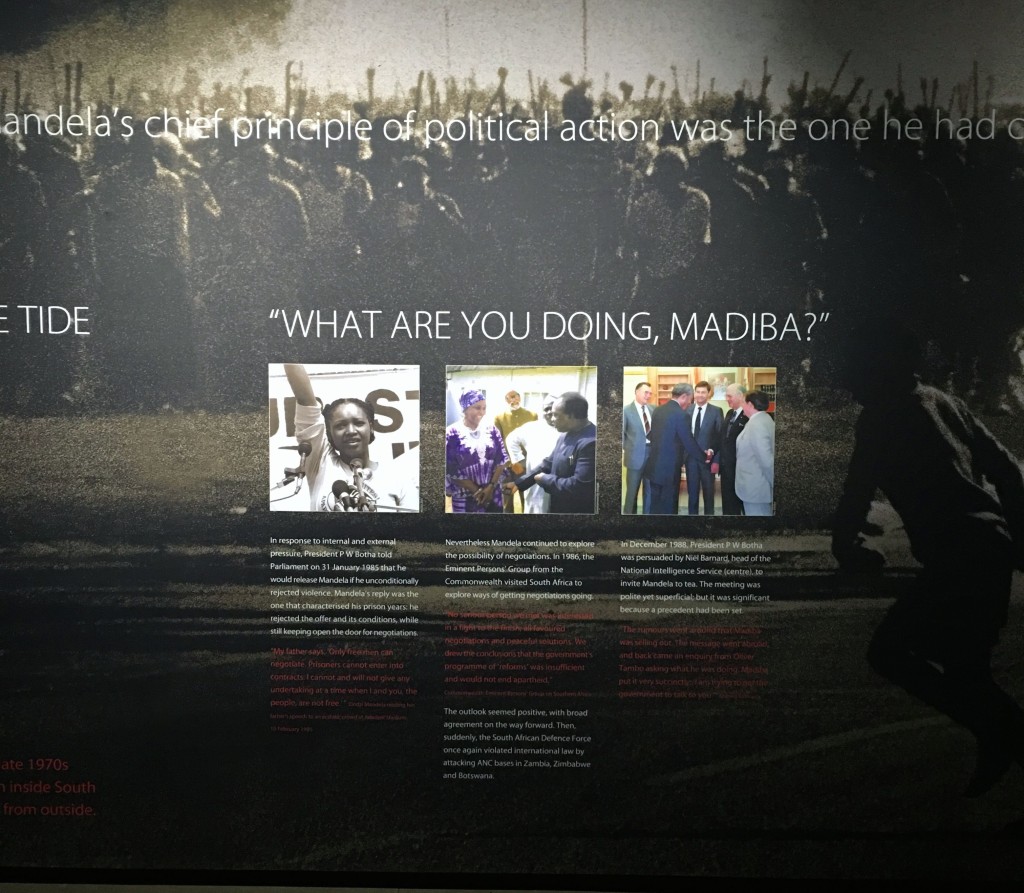 +++++++++++++ |
The Protests |
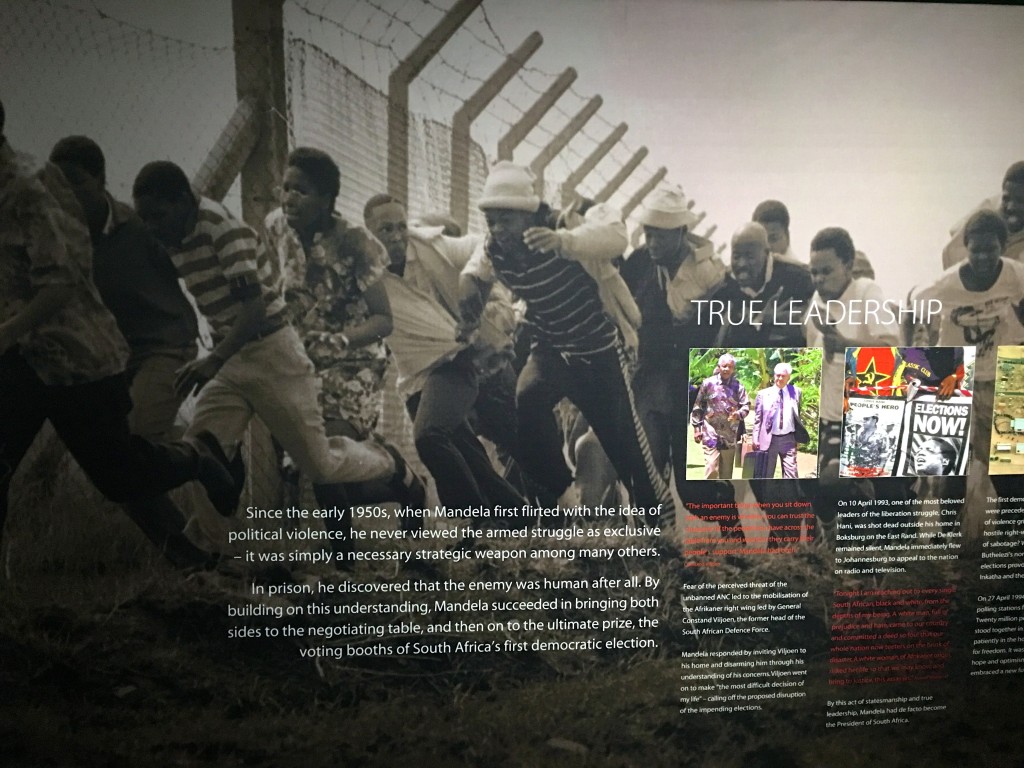 +++++++++++++ |
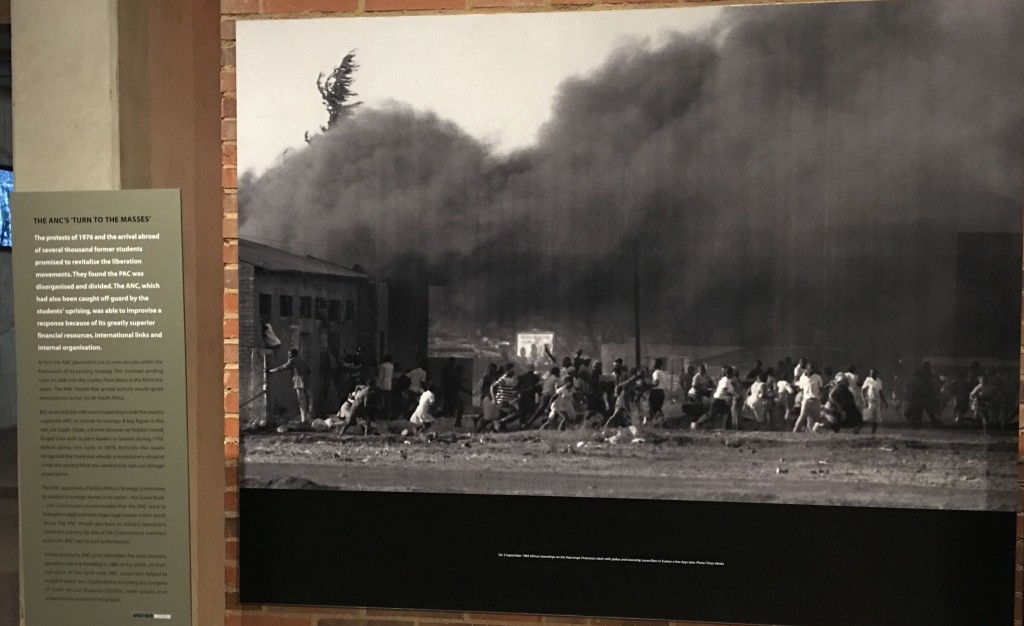 +++++++++++++ |
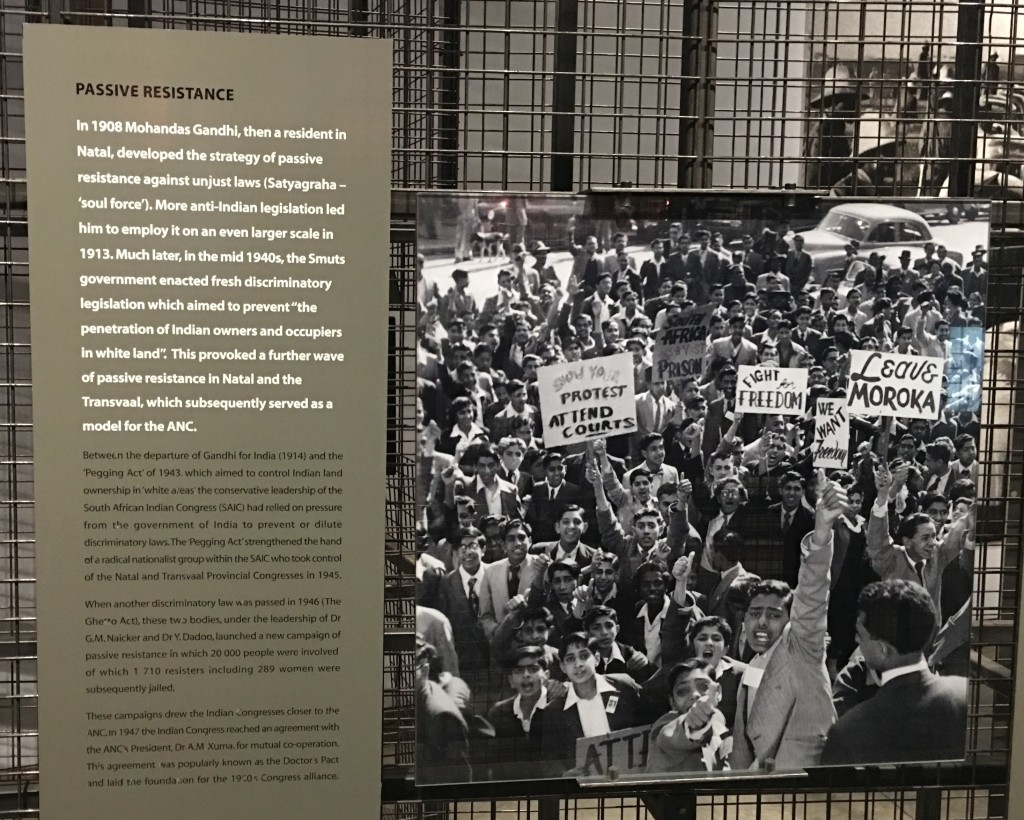 This panel recognises the role of the Indian community, led by Mohandas Karamchand Gandhi, later known as Mahatma Gandhi. |
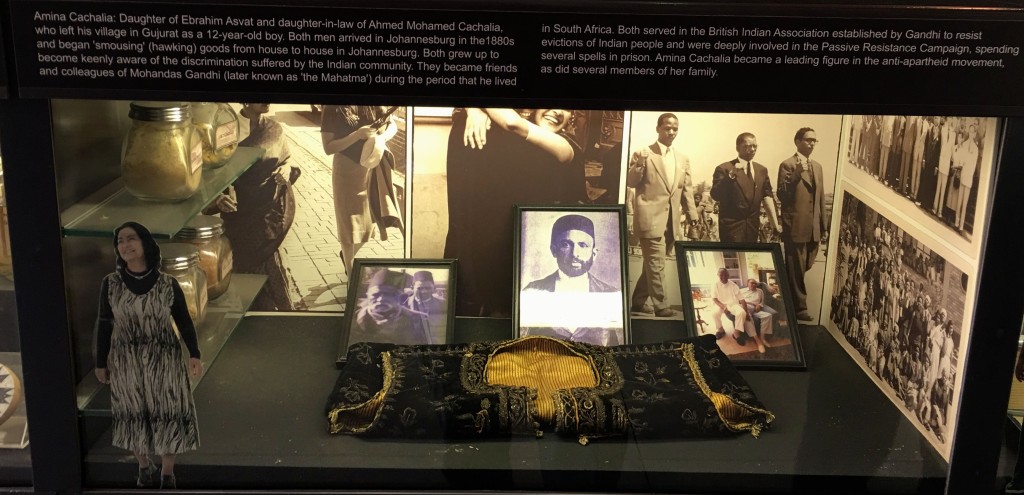 This panel recognises the role of the Muslim community. |
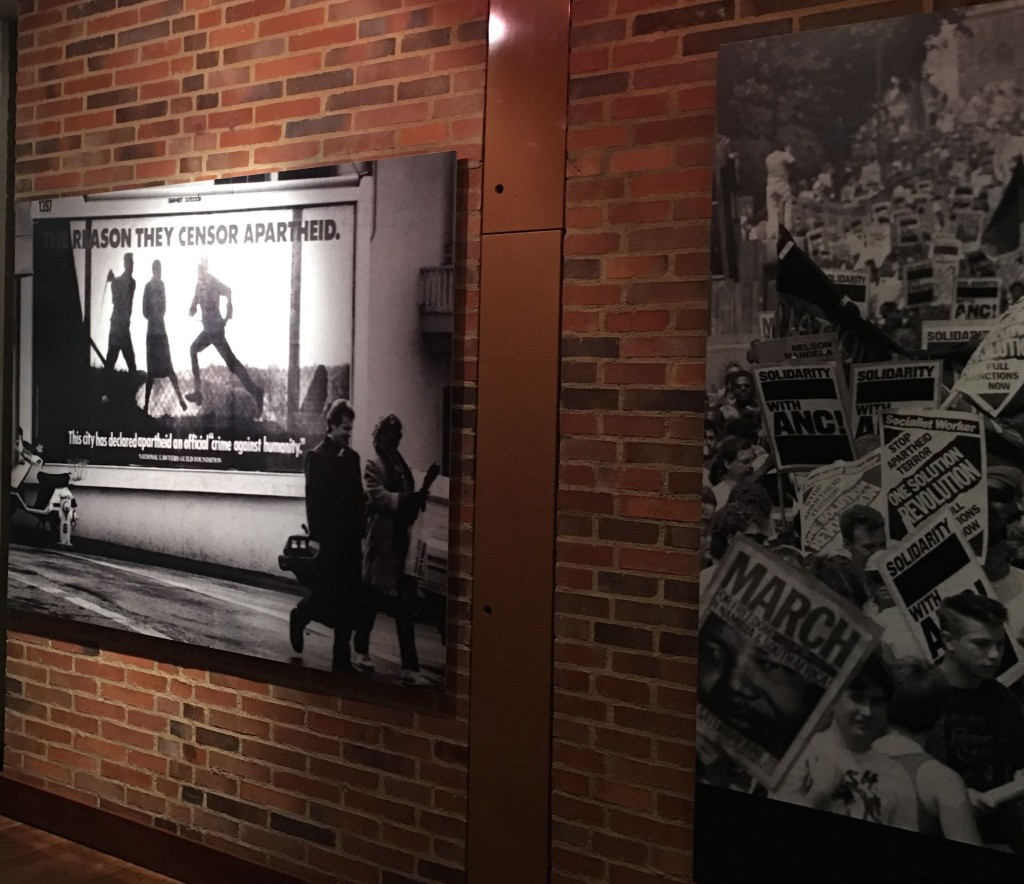 The protests and opposition mount. |
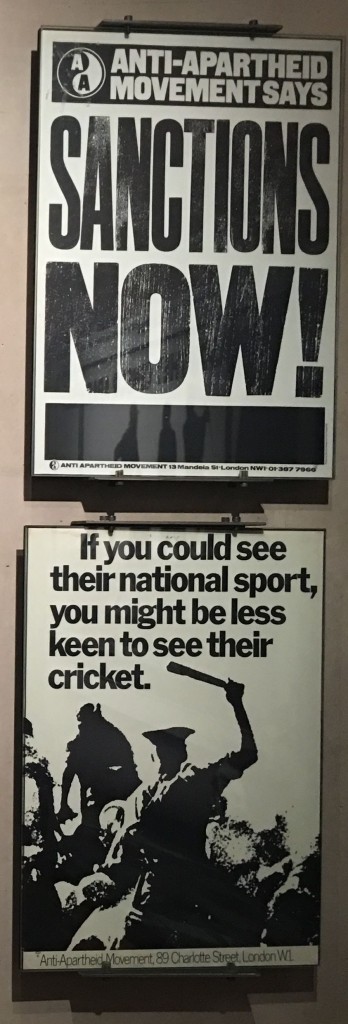 International economic and sporting sanctions were a critical part of the global anti-apartheid movement. |
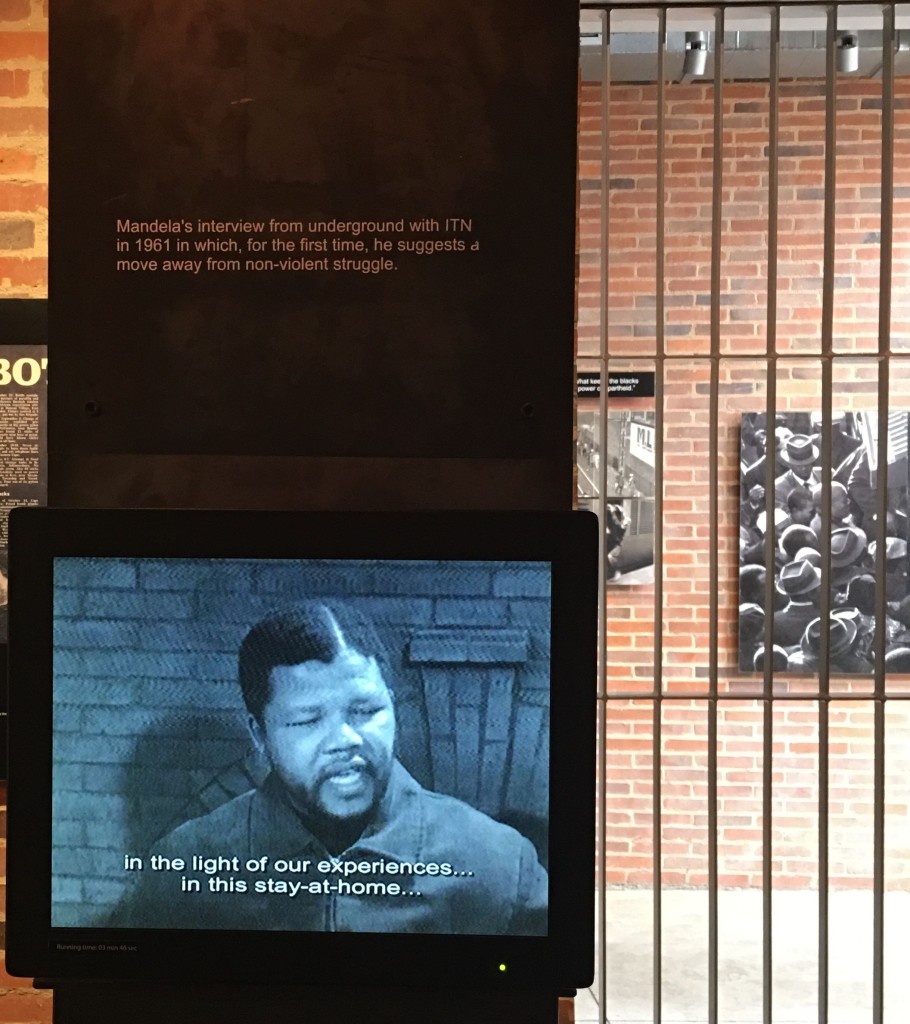 Yes, Mandela did advocate armed struggle. For this, he was branded a “terrorist.” This interview is a matter of record, but it clearly outlines the context in which Mandela felt armed struggle was required. |
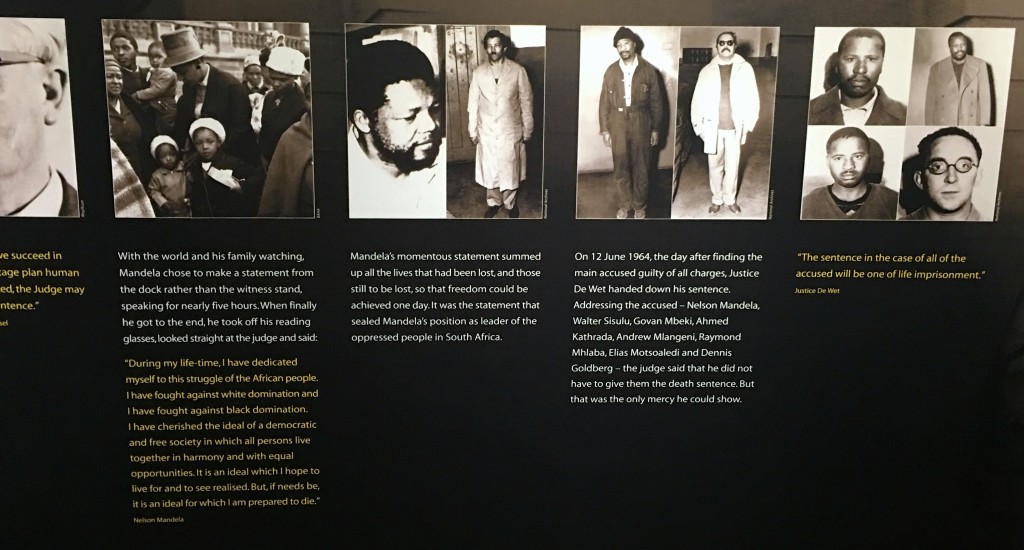 The game-changing speech that put the wheels in motion. |
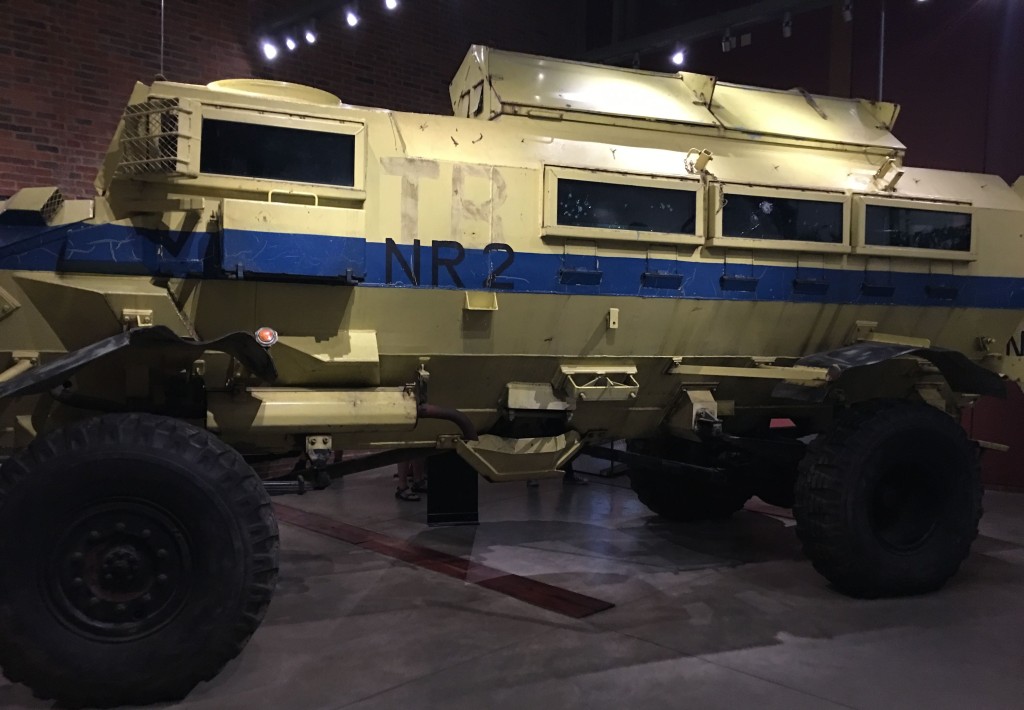 The armoured cars that were used to suppress protests in the Black townships. These monster vehicles are the predecessors of the humvees now deployed in Iraq and elsewhere. |
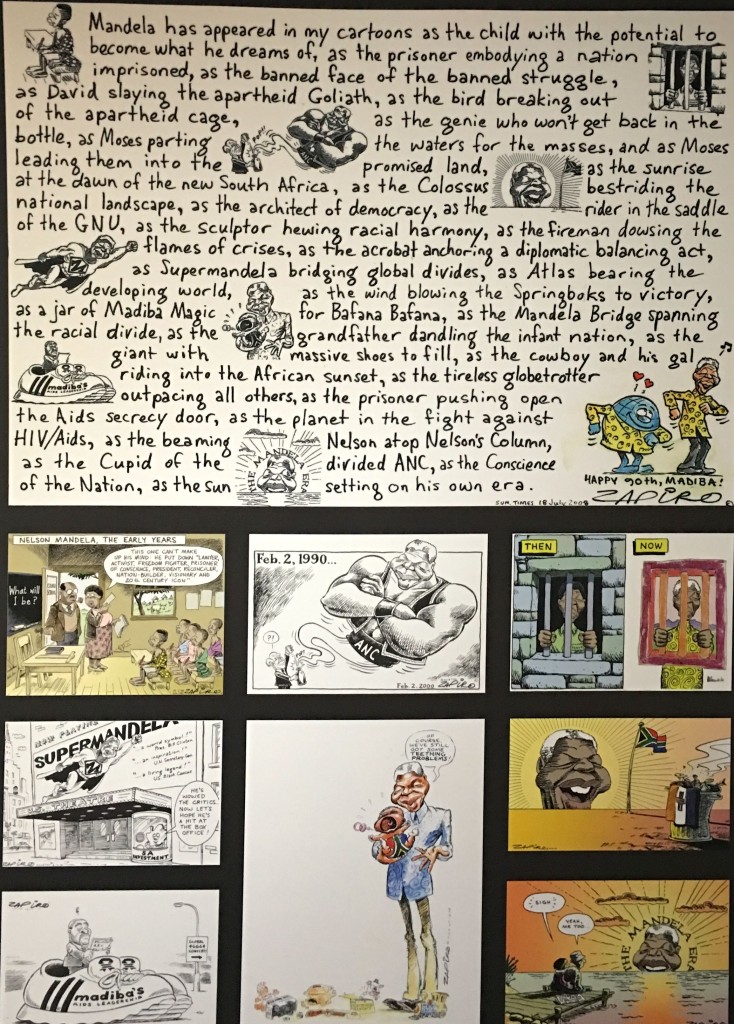 Symbols of protest, all indicative of the weight of expectations that Mandela carried on his shoulders. |
 Symbols of protest. |
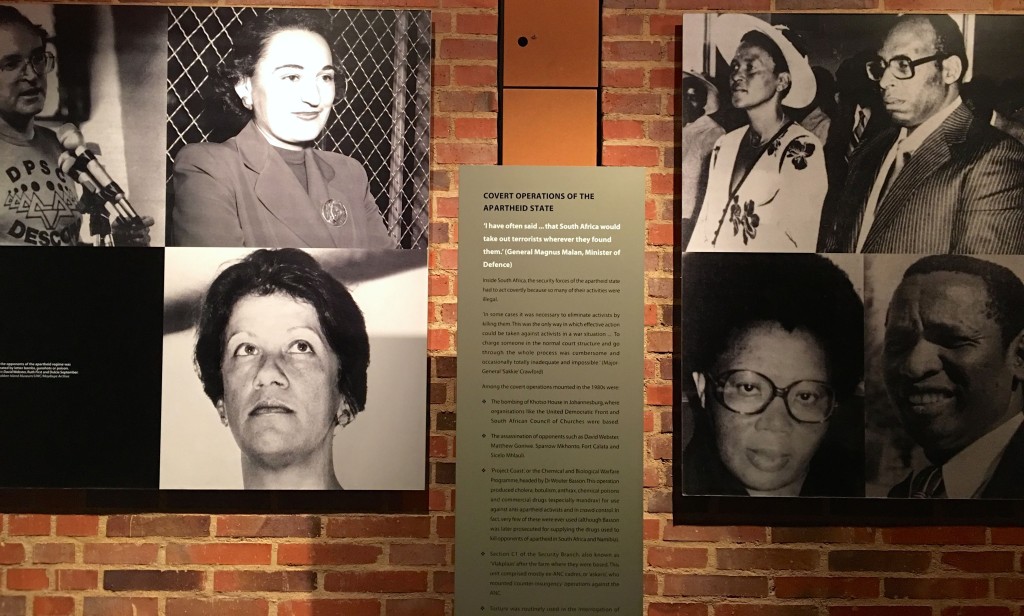 This panel display shows the people, both Blacks and Whites, assassinated by the apartheid regime in covert operations designed to stifle protest. |
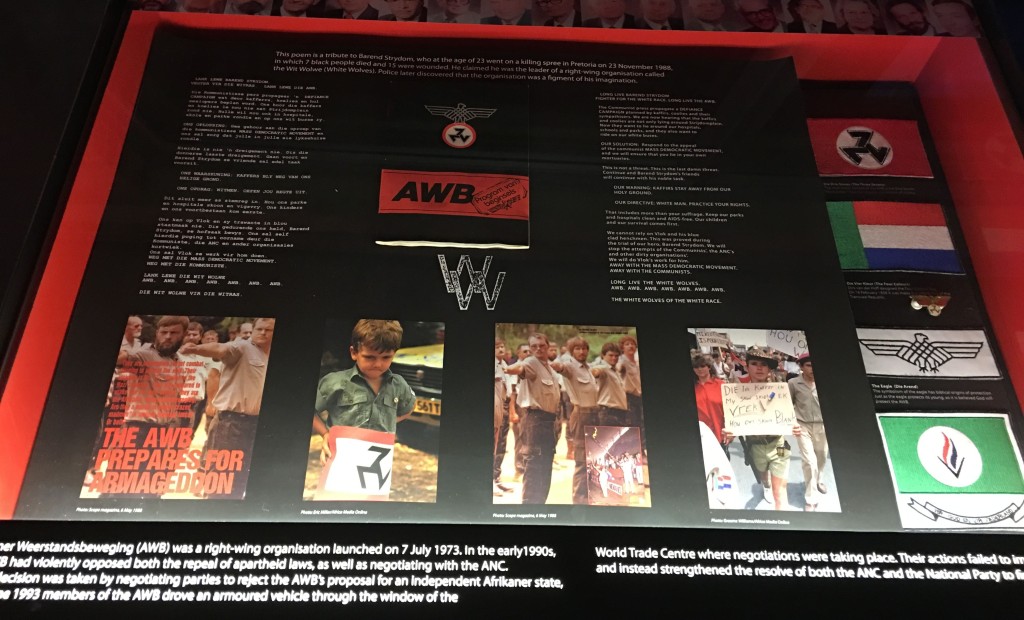 Symbols of right-wing White Supremacy. |
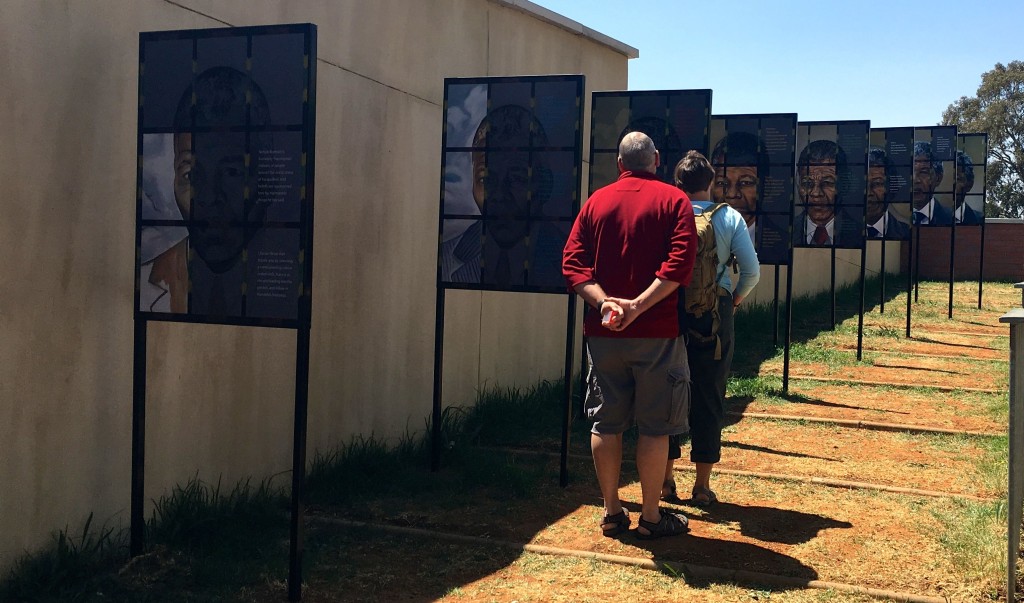 +++++++++++++ |
FREEDOM AND LIBERATION |
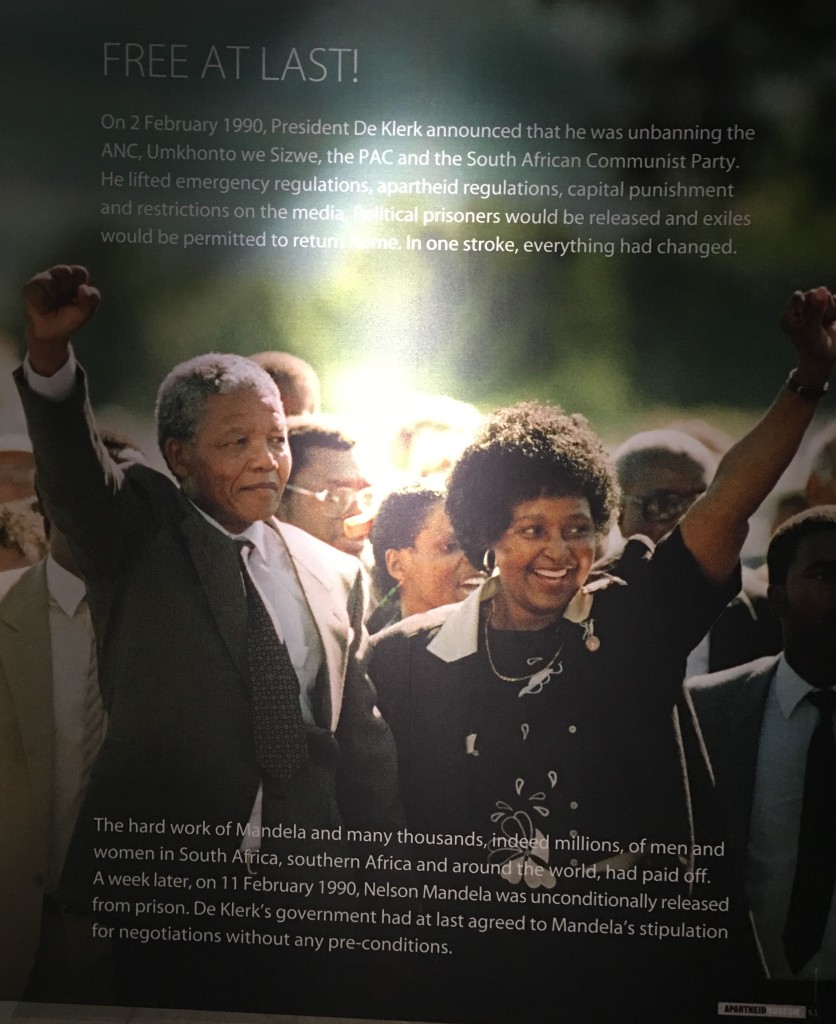 +++++++++++++ |
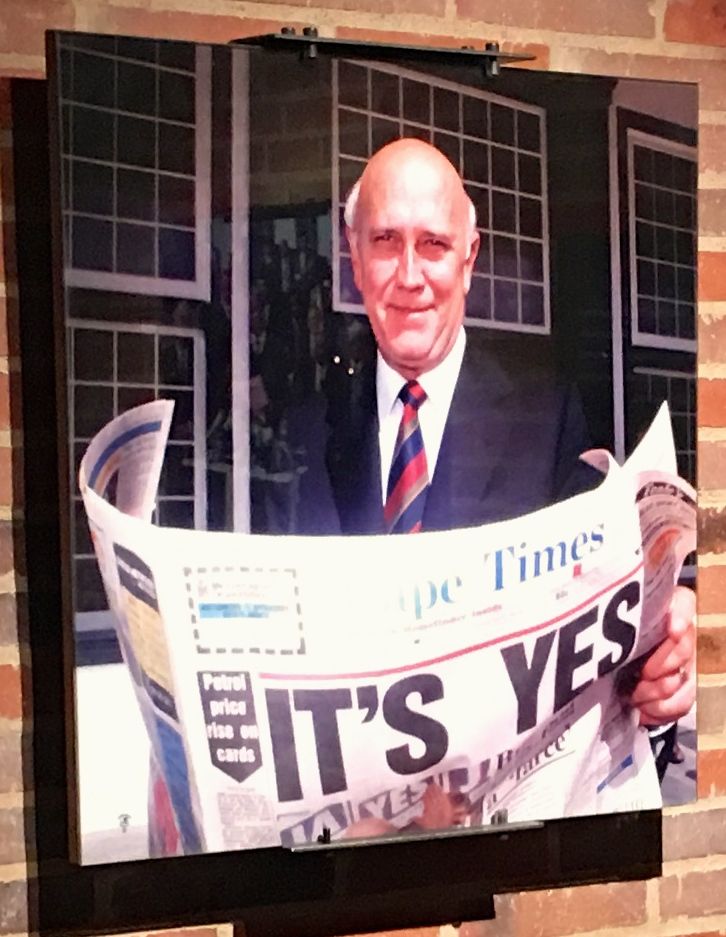 Mandela’s like-minded negotiating partner, former President F.W. de Klerk holding up the triumphant headline after approval of a special whites-only referendum to end apartheid. |
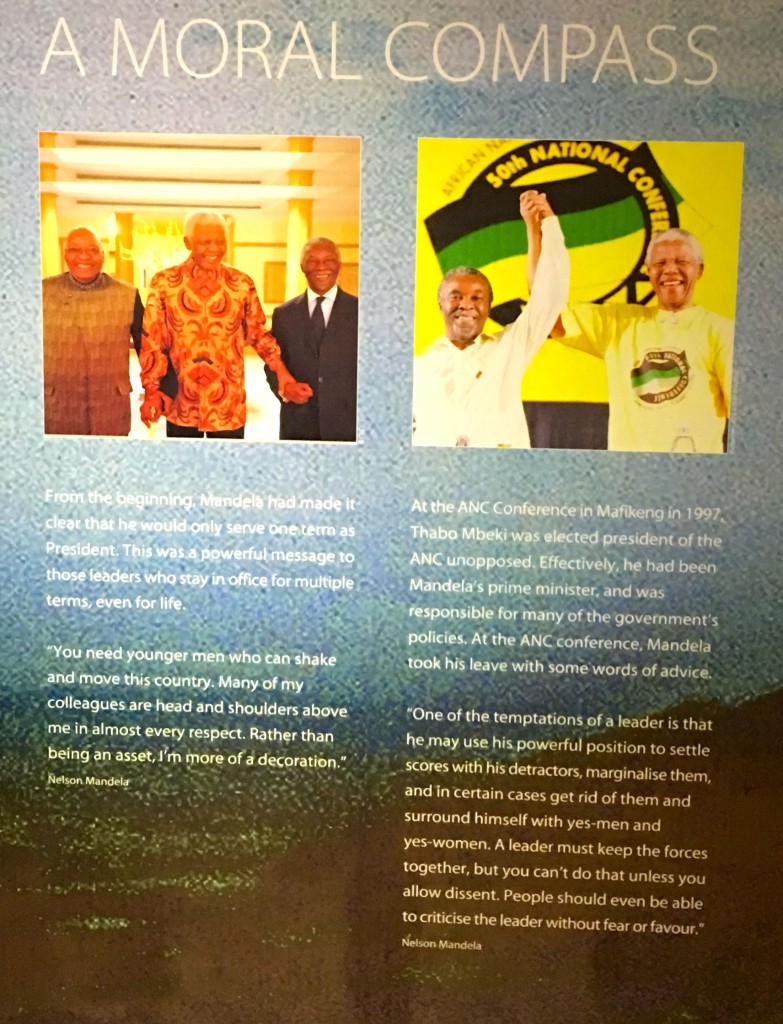 The Moral Compass — One of the most important panel displays and quotes from Mandela about leadership and the role of dissent. |
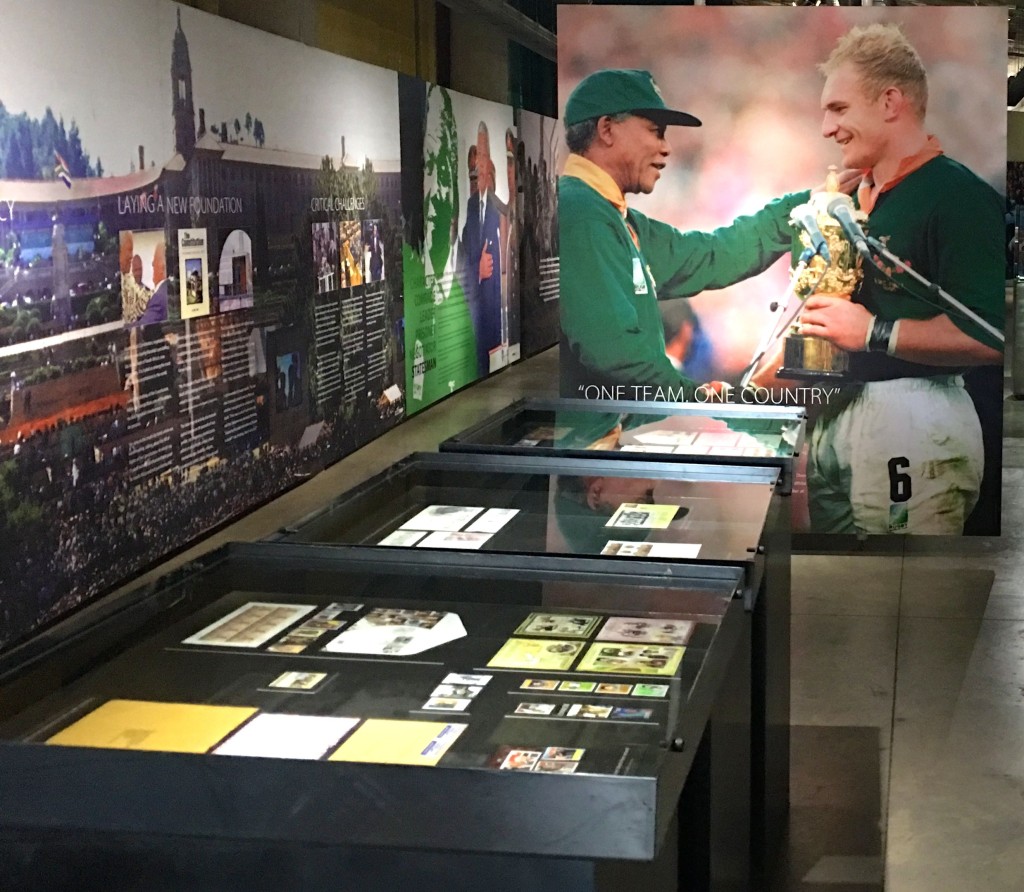 Sports embargoes and sanctions were lifted. Mandela congratulating the captain of the South African rugby team. |
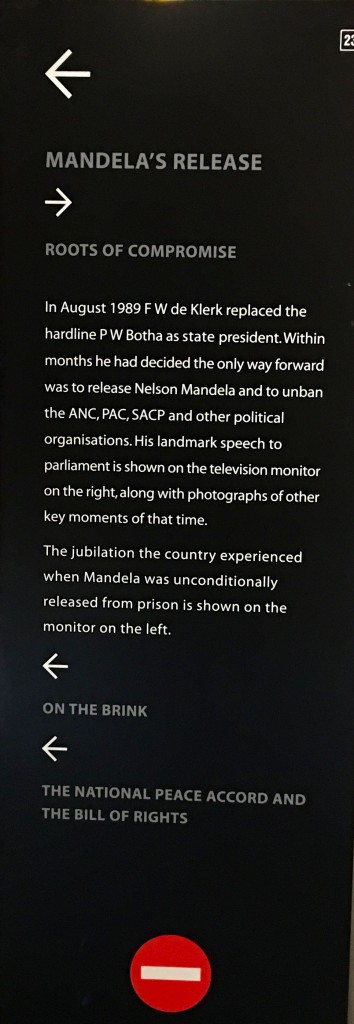 +++++++++++ |
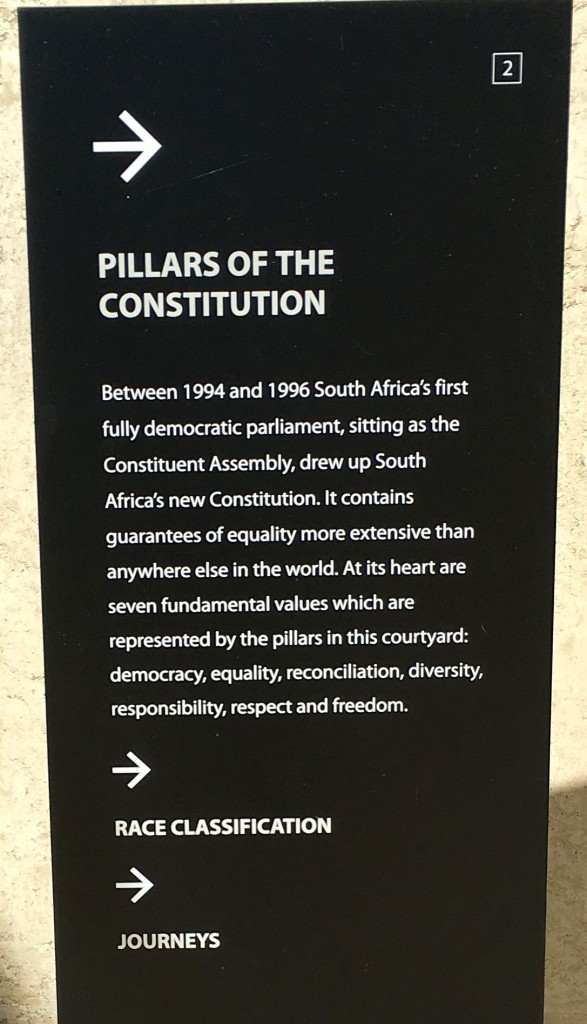 +++++++++++ |
A NEW ERA DAWNS
|
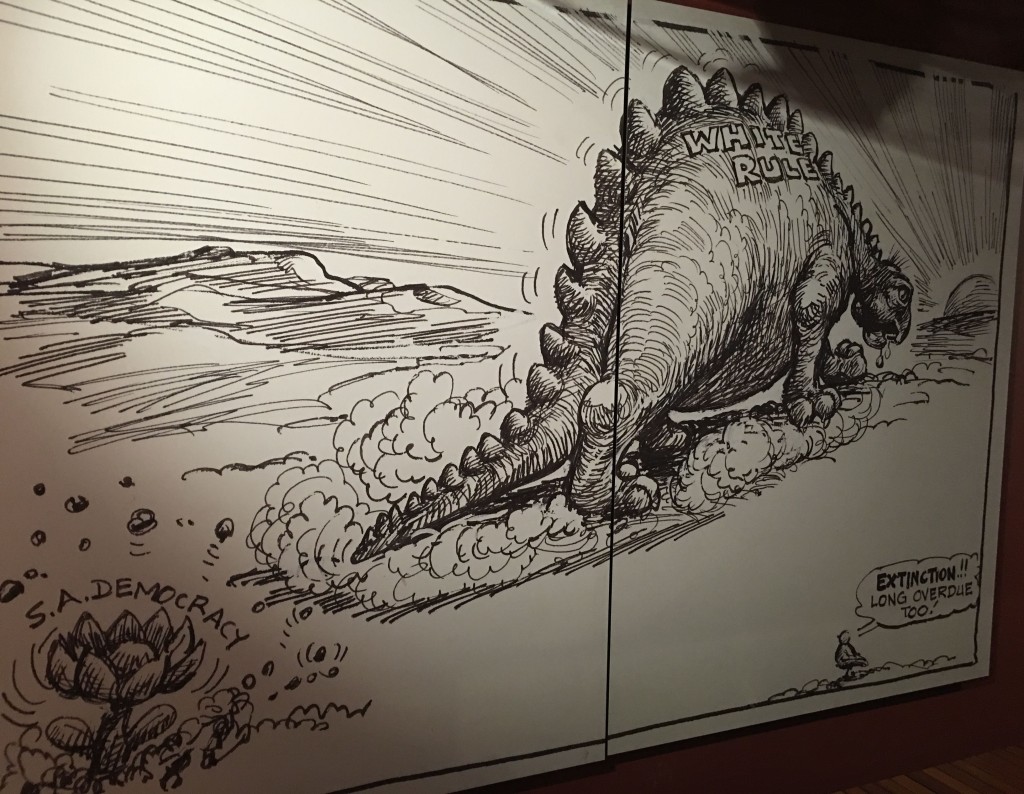 +++++++++++ |
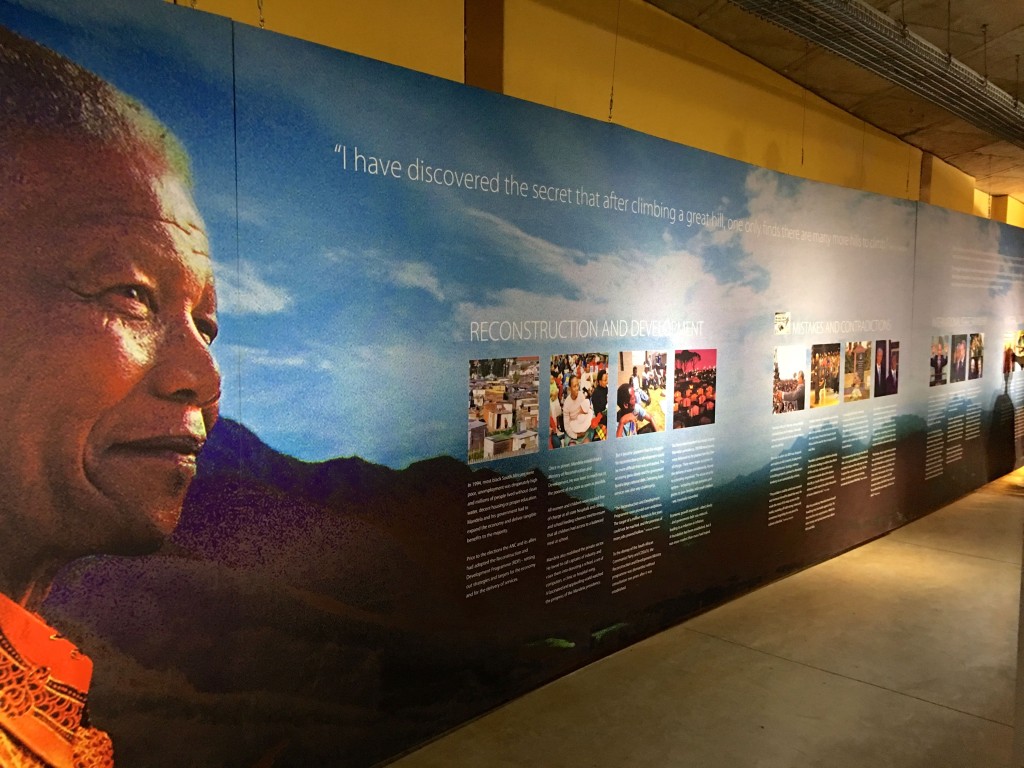 Another classic Mandela quote: I have discovered the secret that after climbing a great hill, one only finds that there are many more hills to climb. |
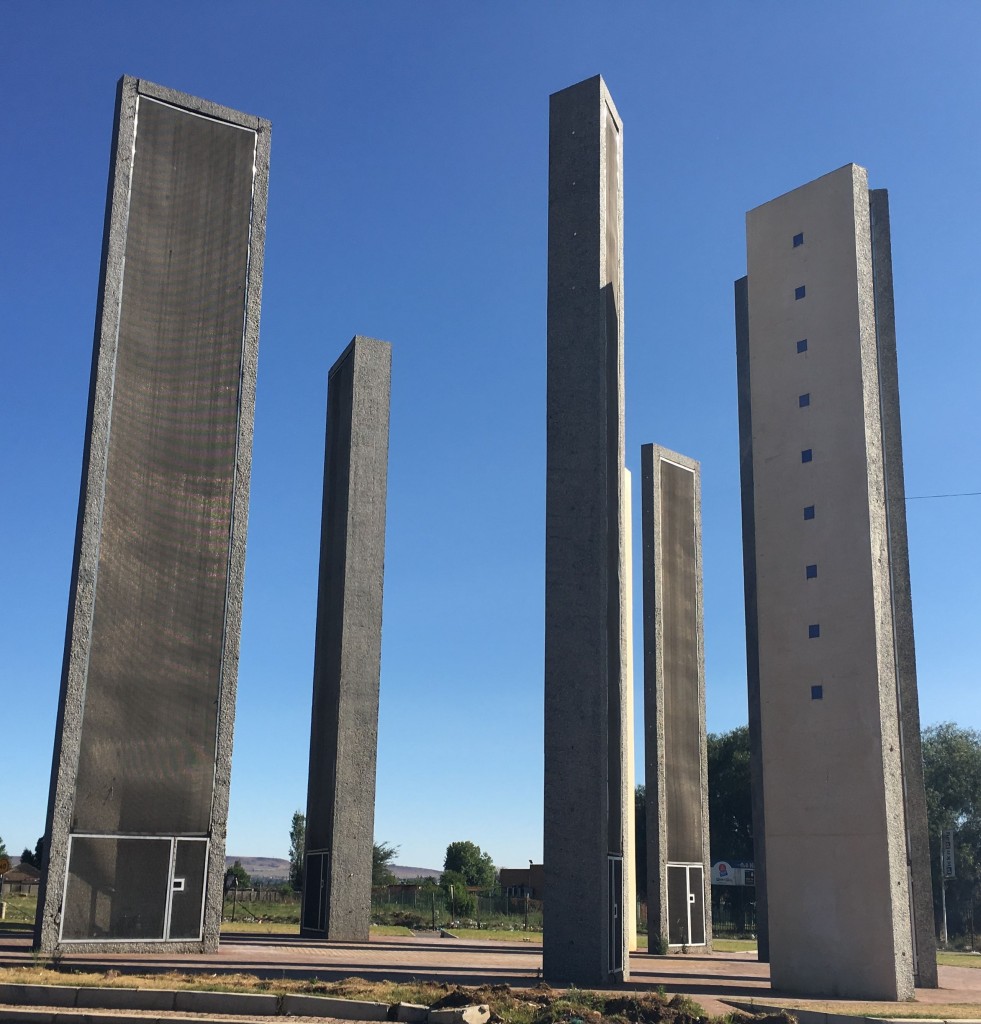 The Seven Pillars of the Apartheid Museum. |
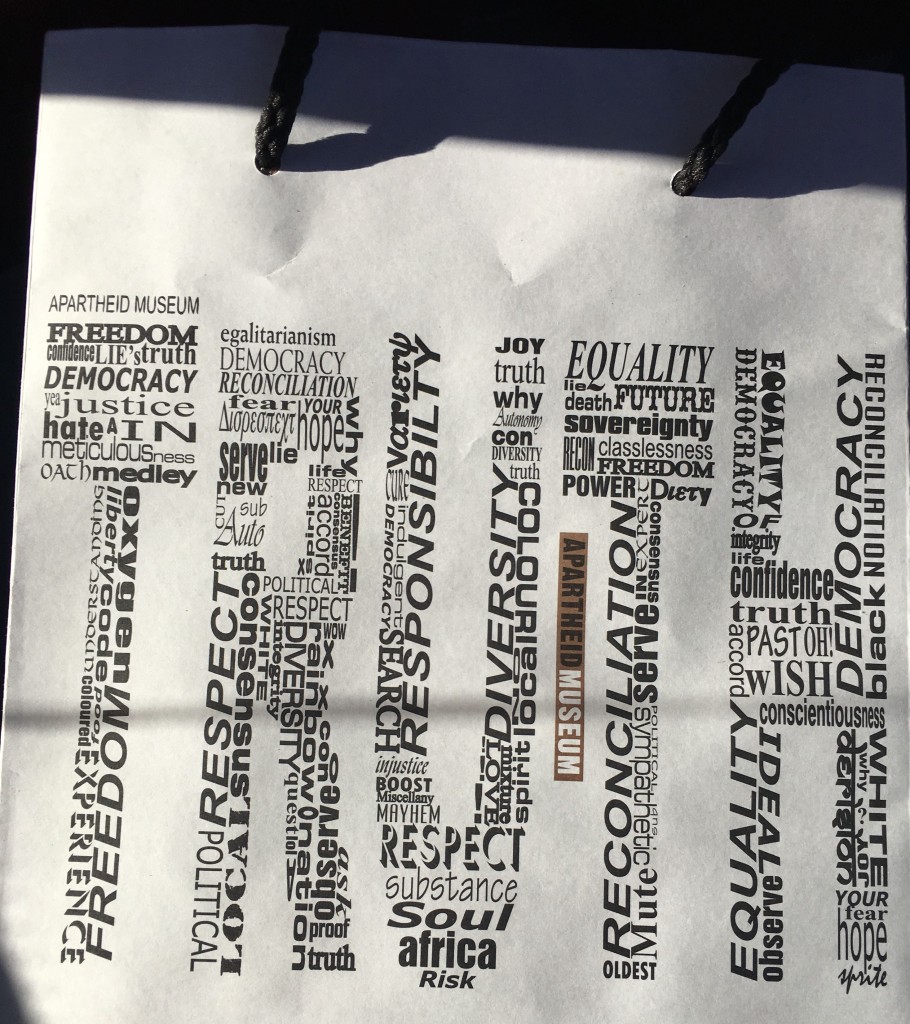 The principles of the anti-apartheid movement, designed in the shape of pillars, to read “Truth”. Visitors who buy anything from the Apartheid Museum shop get bags with this design emblazoned on it, as an omnipresent reminder that some causes are well worth fighting for. |

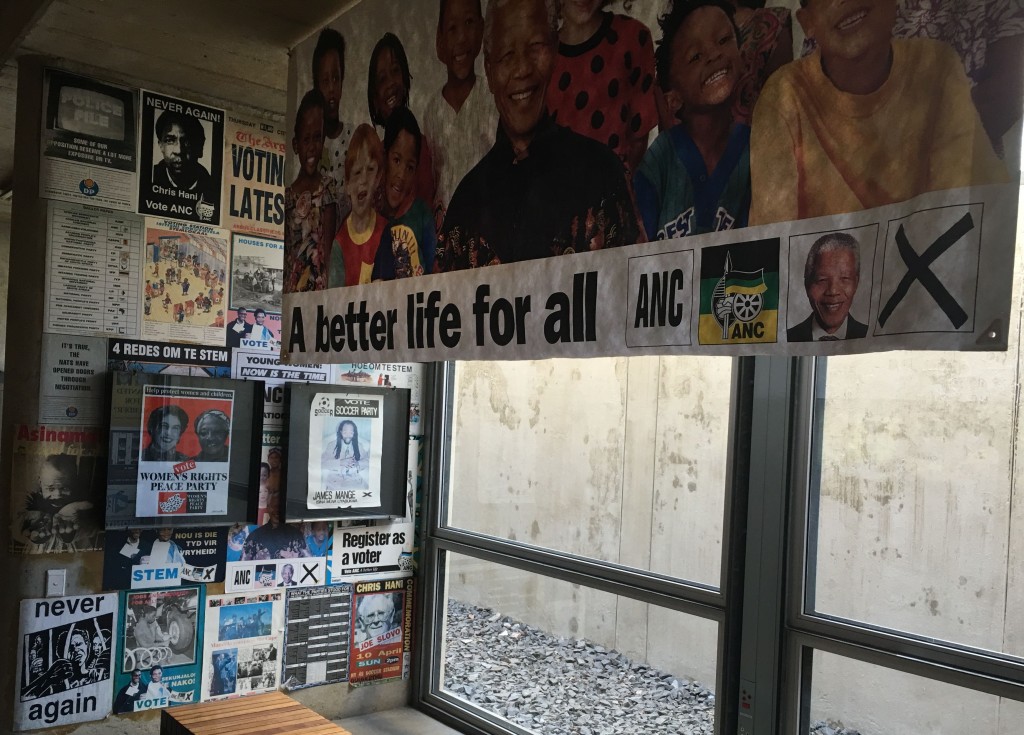


Liked this article? Share it!